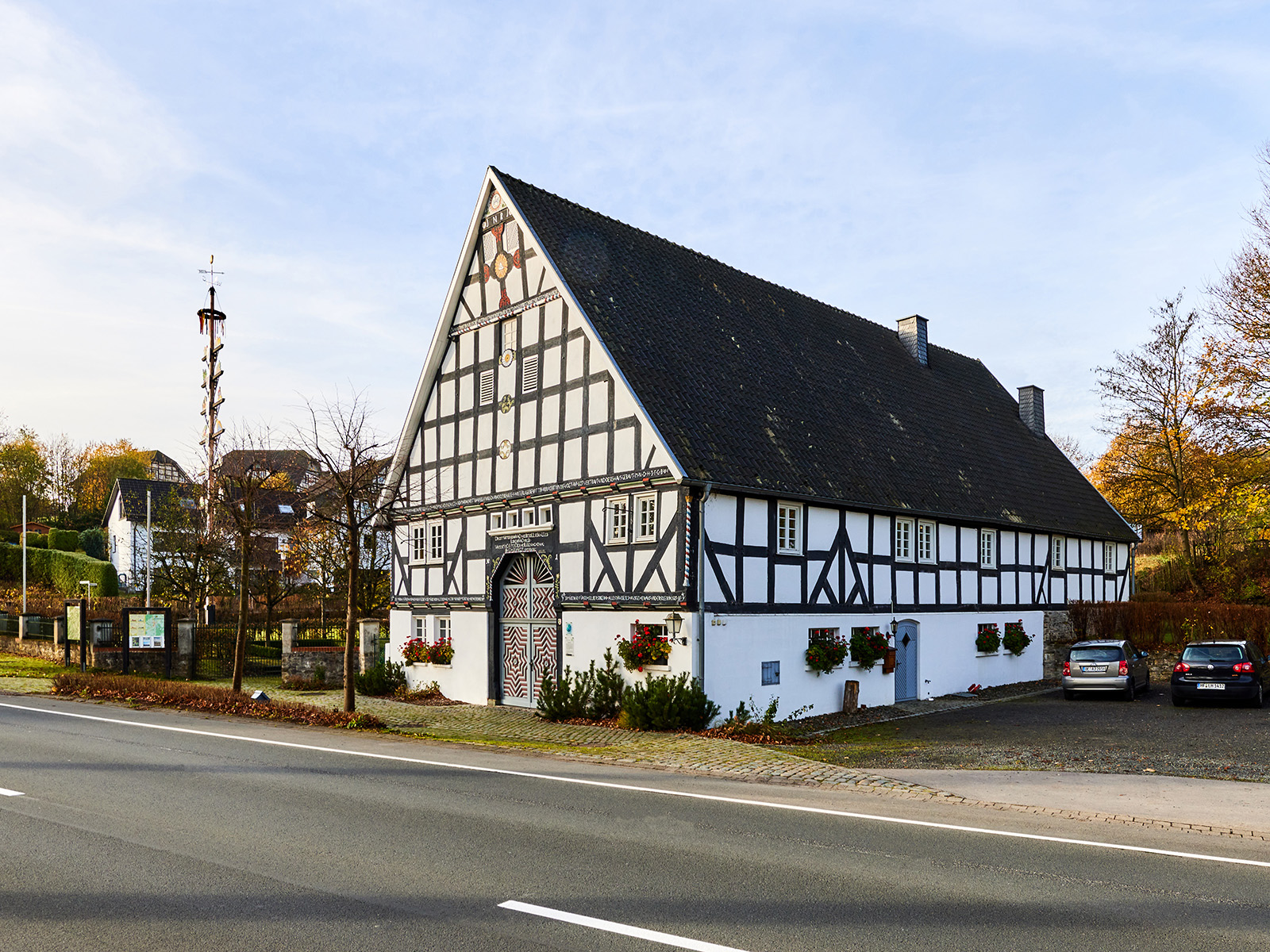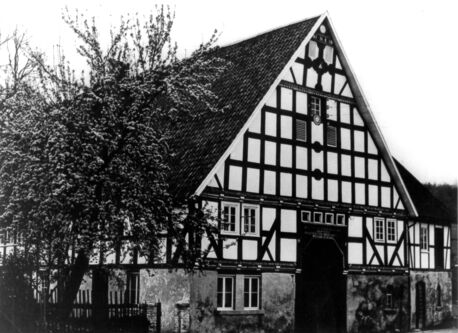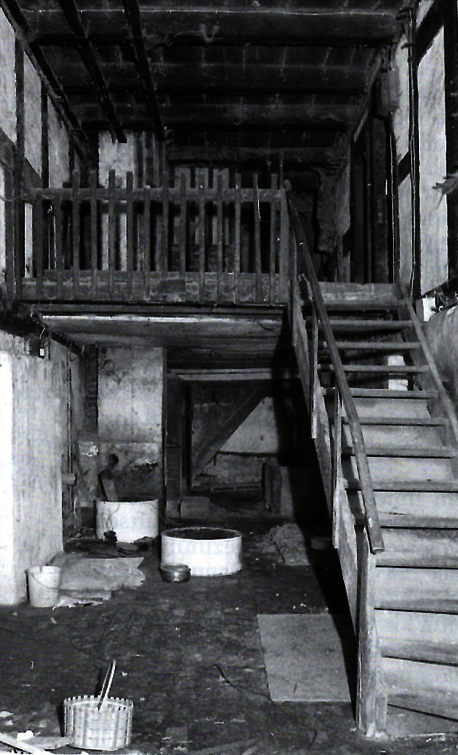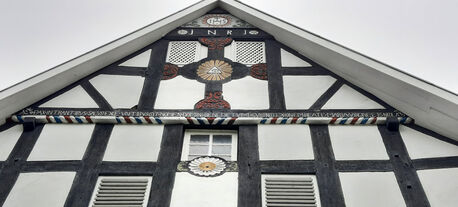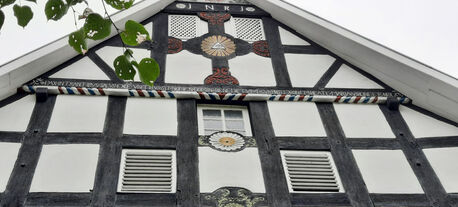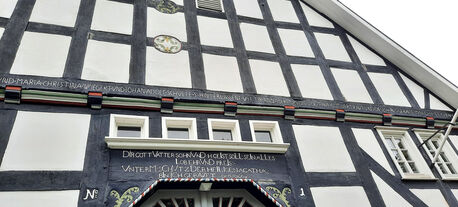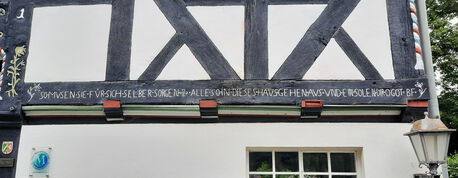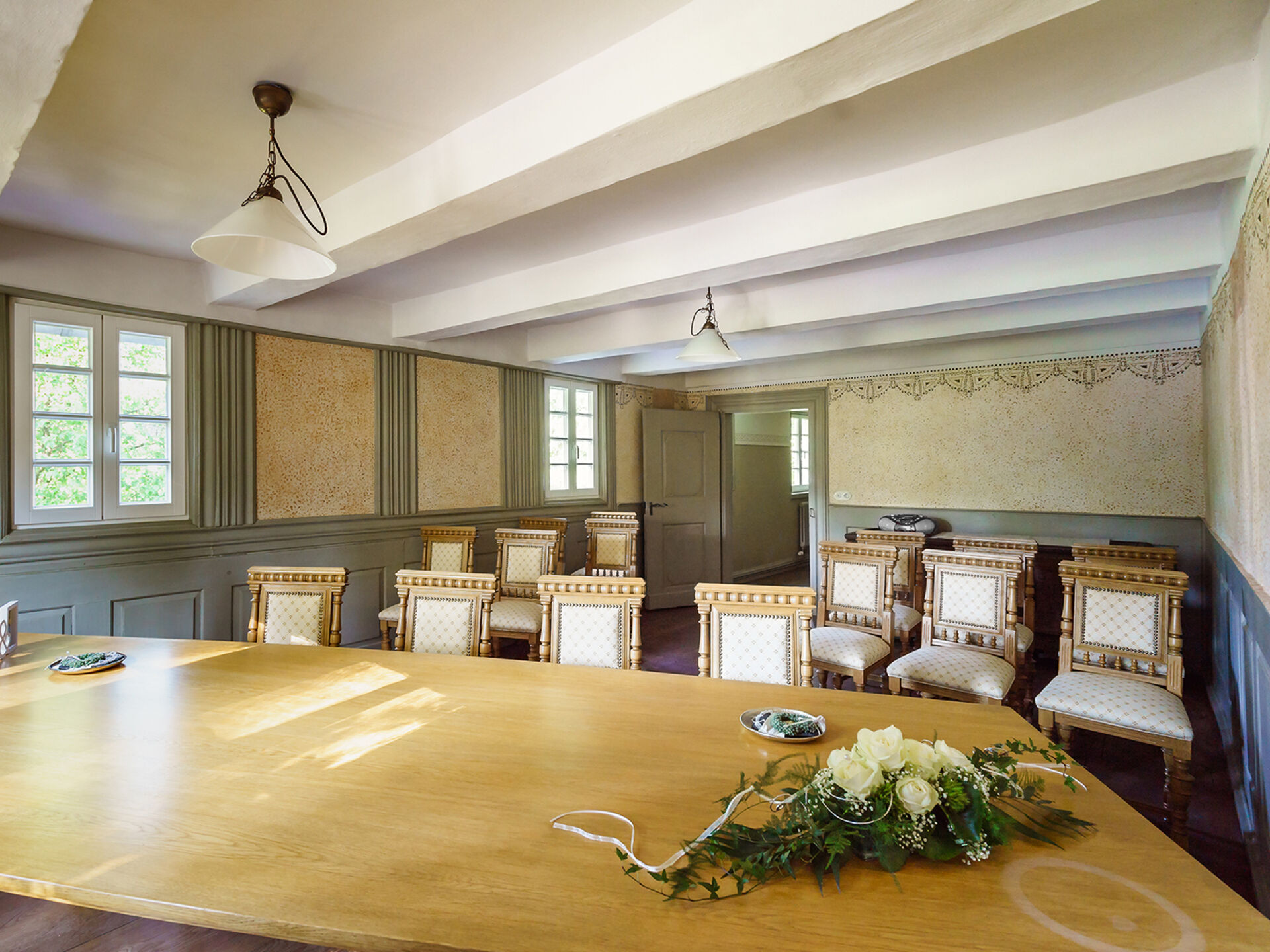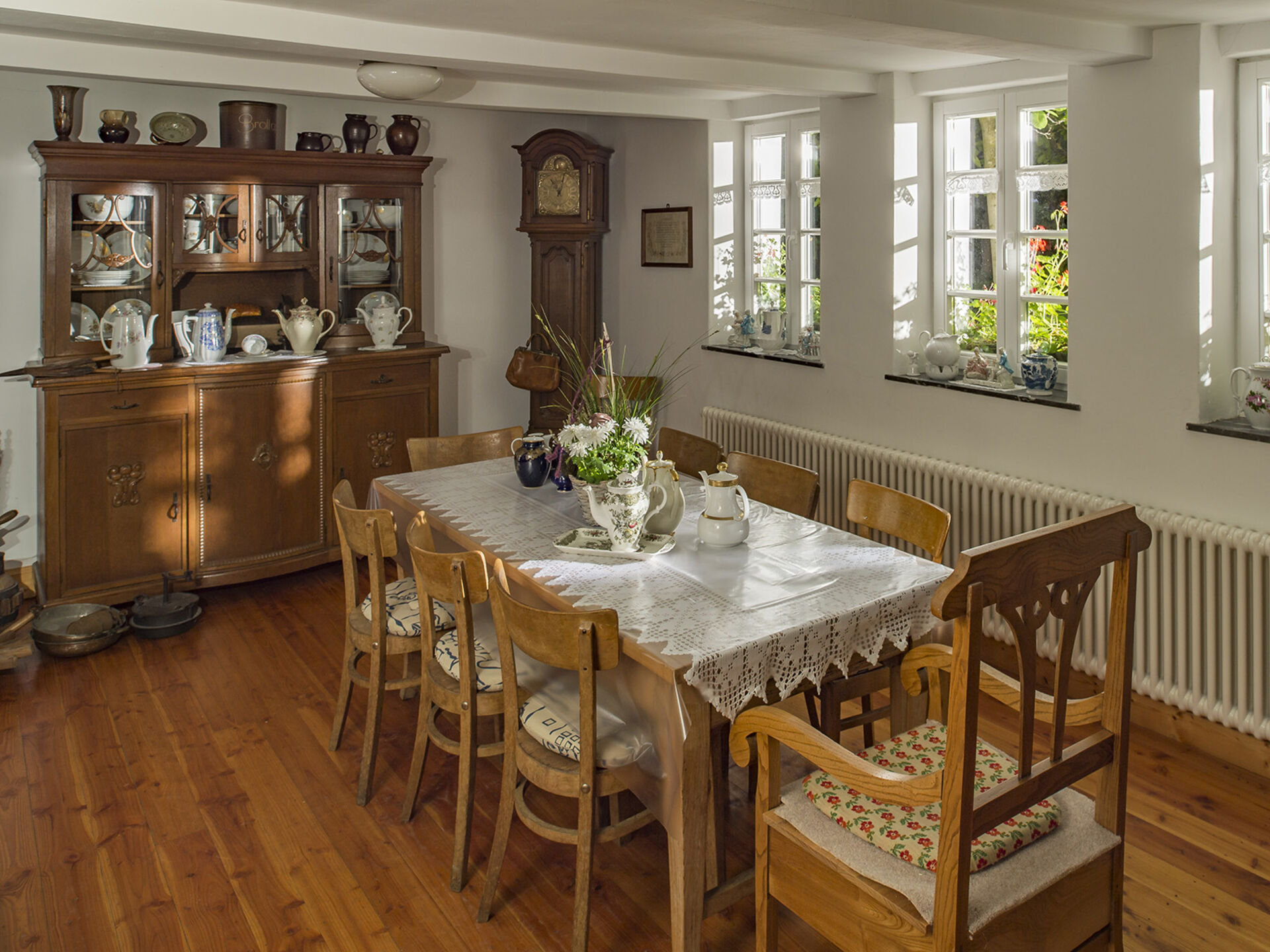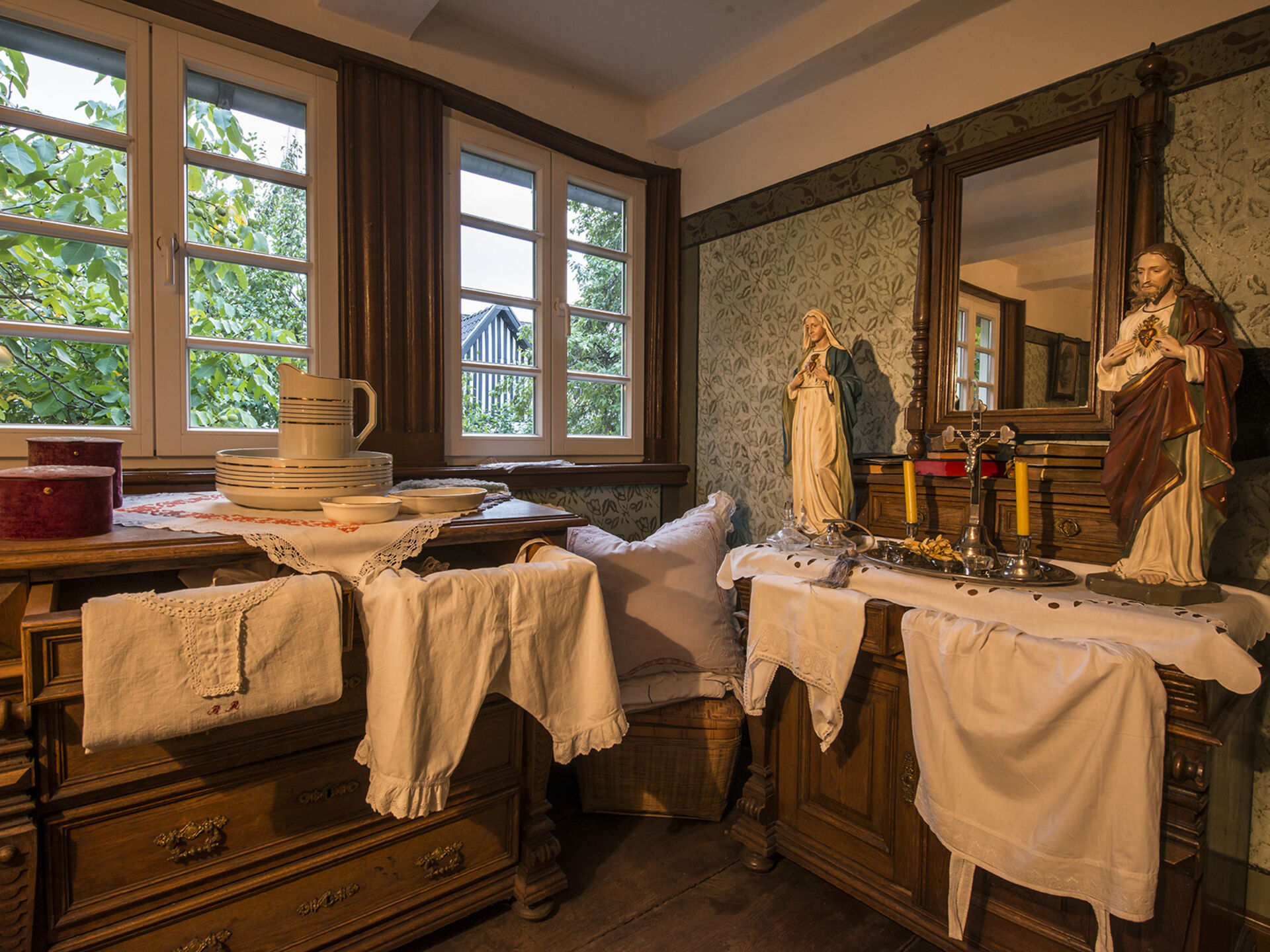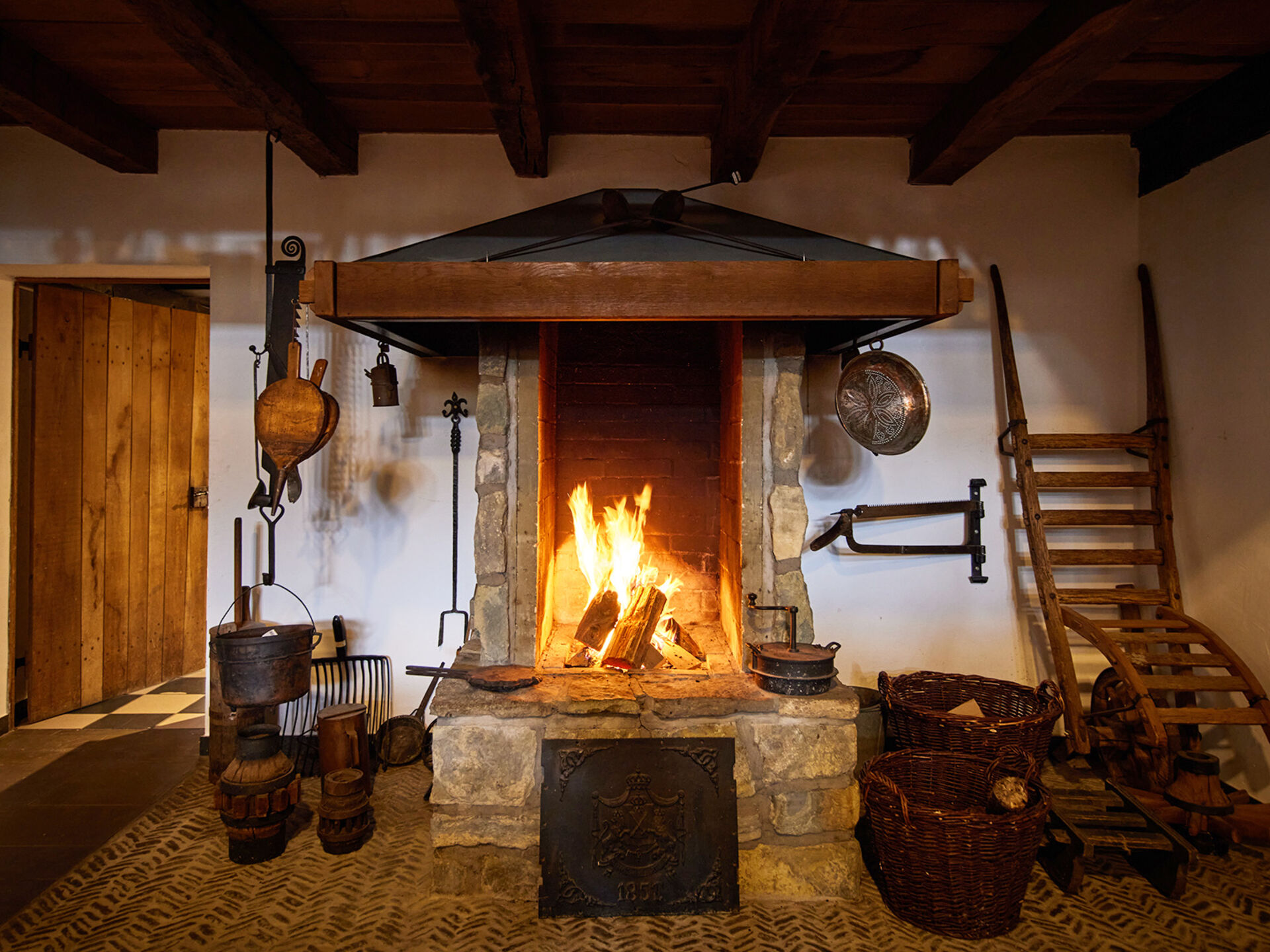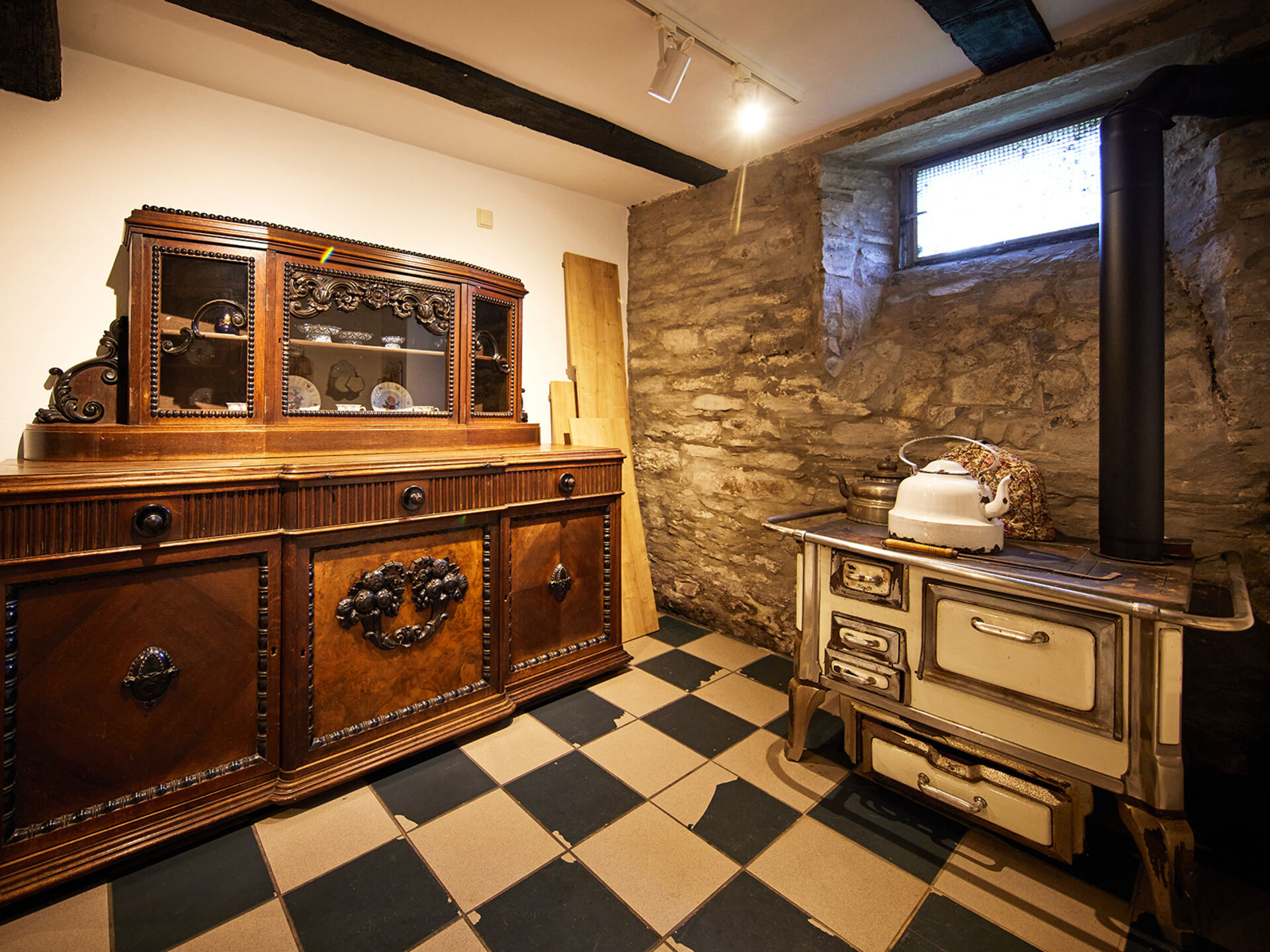Stertschultenhof
At the end comes the tail, called "Stert" in Low German. This makes it clear where the Stertschultenhof is located: at the end of the village, north of Cobbenrode. The farmstead is one of the oldest in the Sauerland. The detailed baroque gable from the 18th century is unusually well preserved. For many centuries, the farmhouse was a stop-off point for travelers, as a guesthouse and a front yard. It has always been ideally located on a route that led from the Sauerland to the Rhineland. Today it is the B 55 - this section used to be known as the Minden-Koblenzer-Chaussee. The house has remained the meeting point: Among other things, it now houses a meeting place.
When Cobbenrode was first mentioned in a document in 1293, the farmstead of "Stert Schulte" was probably one of four farms in the village. The current half-timbered building was rebuilt in 1769. The farm belonged to the monastery for a long time Meschede and was probably a lucrative source of income. In hilly areas, harnessing yards were common. They were used to harness new draught animals or additional horses to carriages in order to cope with ascents. Until the middle of the 19th century, there were still several horse-drawn carriages here due to the incline of the Schwartmecke. At the end of the 19th century, the farm was probably a staging post for ore transports from Siegerland. Farming and a restaurant provided the residents with additional income. The farm was used for agricultural purposes until 1995, when the owner family sold the farm to the local history and development association Cobbenrode. Today it is a public meeting place with a museum, archive, exhibition space and wedding room.
The unusual size of the Sterschultenhof is still clearly visible today. The main building, a Low German hall house from 1769, is largely original. It was built in Sauerländer half-timbered construction and extensively renovated in 1995-2001. Originally, the gabled roof was probably thatched. The first floor wall is made of plastered rubble stone. The half-timbered upper storey is supported by a 4-post framework, with a high gable triangle above. Particularly impressive is the characteristic gable wall, on which many decorative elements can be seen, such as the figure of the Wild Man, inscriptions and carvings. The house is divided into three "naves", which can be reached via a passable hallway. The rear part is dug into the slope. The stables were located in the right-hand aisle, with the storage and dining rooms above. There are some significant decorations in the house, including unique wall paintings and paneling.
It is not known which Schulte gave the Stertschultenhof its name. To this day, it is common in the region to use centuries-old farm names as a suffix. In the 16th century, the "Haus zum Sterten" is mentioned in writings, in the 19th century the owner "Franciscus Willmes gen. Stert Schulte" is mentioned. The male builders of the main house give their surnames as Schulte on the gable triangle. The house not only provided space for a large family and their servants, but also for horses and the inn. Carters came and went. Some of the outbuildings and associated properties were also inhabited. Most recently, the Bille family lived in the main house for over 100 years. After renovation, the public meeting place and museum were opened in 2001. Other rooms are used by the archive for Low German dialect of the Sauerländer Heimatbund and the nature park Sauerland-Rothaargebirge.
Vertelleken
Chatting out of the sewing box...
Some of you may have noticed straight away: the family name "Coppenrath" comes from Cobbenrode. And if this makes you think of cakes, you're not entirely wrong, as there is a family connection to a confectionery brand with a similar name. Part of the former knightly dynasty of the von Cobbenrode lived here and certainly also had their cakes made in the Stertschultenhof. However, as early as the 16th century, the family renounced the old nobility and turned to other activities.
The descendants now live scattered around the globe - they once came to a family reunion in Cobbenrode. In 2002, the Coppenraths traveled from Germany, Belgium, the Netherlands, the USA, Canada and Tahiti. In memory of their ancestral home, they erected a memorial stone made of Fredeburg slate at Sterttschultenhof. And ate 40 large cakes that had been freshly delivered...



